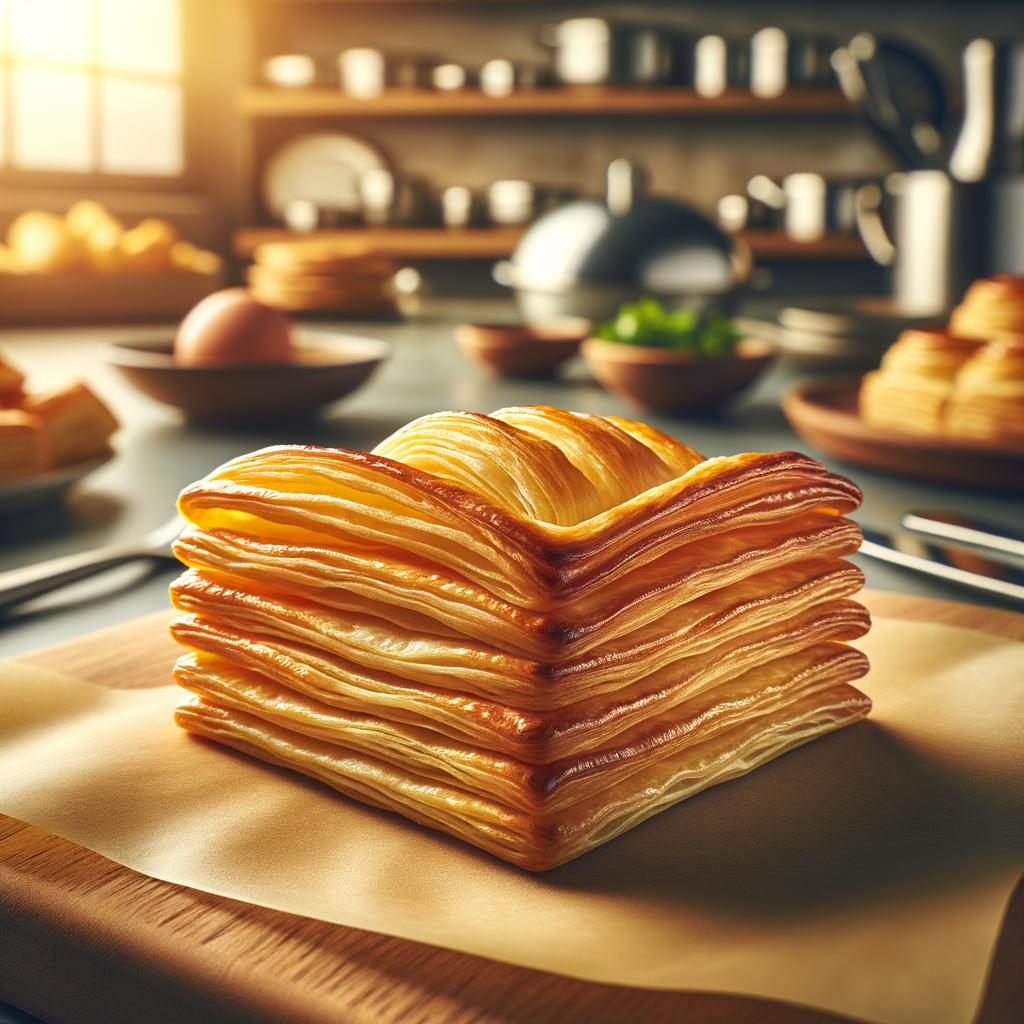Puff Pastry Sheets

Description
Puff pastry sheets are a marvel of the culinary world. At first glance, they may appear as simple, flat rectangles of dough, but upon closer inspection, you can see the delicate layers waiting to rise and puff into a flaky, golden masterpiece. The texture of puff pastry is light and airy, yet crispy, with a rich, buttery flavor that is simply irresistible. What sets puff pastry apart from other types of dough is its unique method of preparation, which involves layering dough and butter multiple times to create hundreds of thin layers. When baked, the moisture in the butter creates steam, causing the dough to puff up and separate into the flaky layers we know and love.
Primary Uses
Puff pastry sheets are incredibly versatile and are used in a wide variety of cuisines and dishes. They are the key component in many French pastries, such as mille-feuille and croissants, and are also used in savory dishes like beef Wellington and pot pies. In the Middle East, puff pastry is used to make sweet pastries like baklava. Outside of the culinary world, puff pastry is often used in food art due to its ability to hold shapes well when baked.
History
The history of puff pastry is shrouded in mystery and romance. Some say it was invented by a French pastry cook's apprentice in the 17th century, who was trying to make a special bread for his sick father. Others believe it originated in Spain or Greece, influenced by the Moorish cooking methods. Regardless of its origin, puff pastry has been cherished for centuries for its delicate texture and rich flavor. Over time, it has evolved from a luxury item enjoyed by the elite to a staple ingredient in many traditional dishes around the world.
Nutritional Information
While puff pastry is undeniably delicious, it's not the most nutritious ingredient due to its high fat and carbohydrate content. However, it does contain small amounts of protein and certain vitamins and minerals, thanks to the flour and butter used in its preparation. Compared to other types of pastry, puff pastry tends to be higher in fat and calories due to the large amount of butter used. However, when used in moderation and paired with nutrient-rich fillings, puff pastry can certainly have a place in a balanced diet. After all, food is not just about nutrition, but also about enjoyment, culture, and history, and puff pastry certainly has plenty of those to offer.

